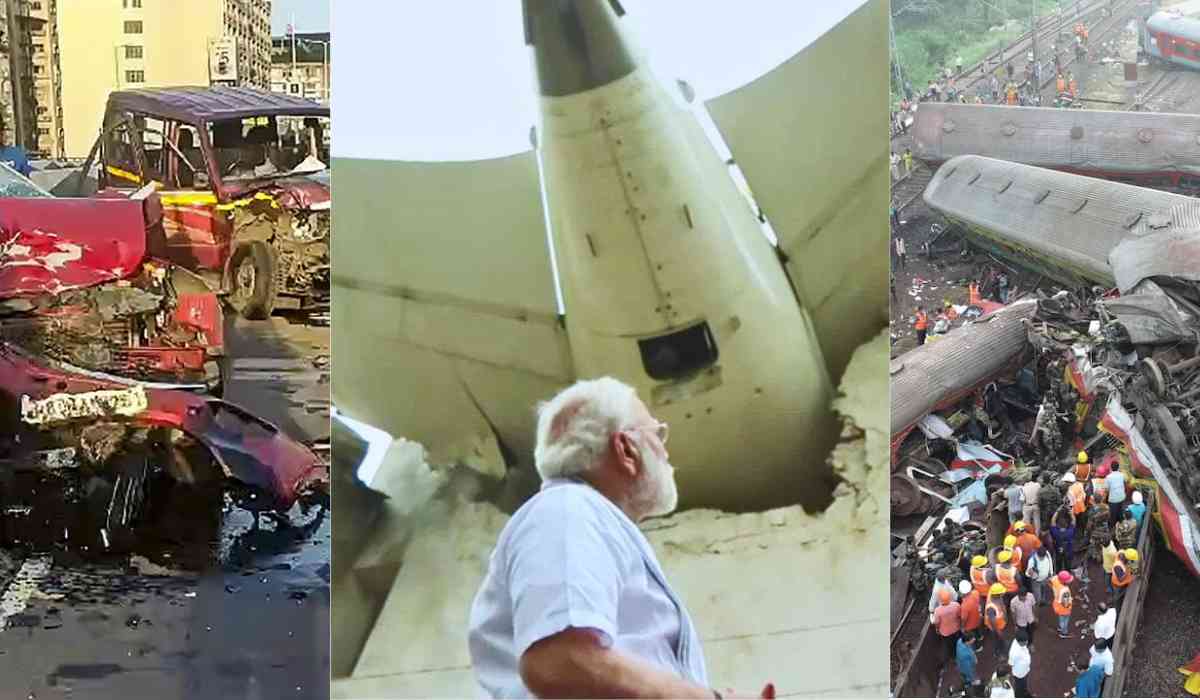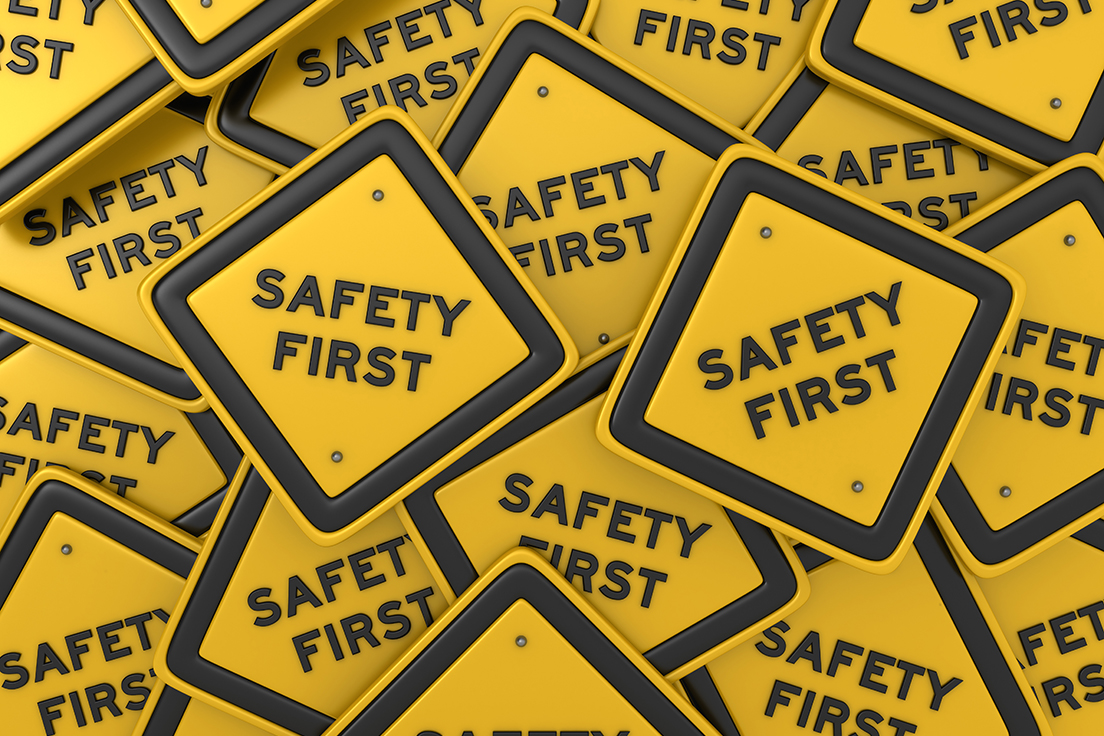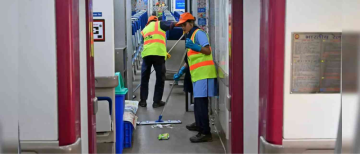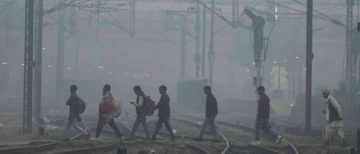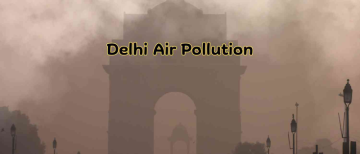In June 2025, India was shaken by one of its deadliest aviation disasters: an Air India flight carrying 242 people crashed shortly after takeoff from Ahmedabad, resulting in at least 290 fatalities, including people on the ground. This tragedy has sparked a wave of concern and conversation across the nation. Many are asking: Why are there so many accidents in India recently? Is 2025 turning into India’s “Final Destination” phase—a reference to the popular movie series where fate seems to chase people with a string of unavoidable disasters?
Let’s break down the facts, look at the bigger picture, and understand what’s really happening.

The Recent Air India Crash: What Went Wrong?
On June 12, 2025, an Air India Boeing 787-8 Dreamliner crashed just minutes after taking off from Ahmedabad International Airport. The plane, bound for London, lost signal less than a minute after takeoff at an altitude of 625 feet. The aircraft crashed into a hostel for medical students, causing additional casualties on the ground.
Why Do Most Plane Accidents Happen During Takeoff or Landing?
According to global aviation data, the majority of plane accidents occur during takeoff and landing. In 2024, out of 47 recorded airplane accidents, 22 happened during landing and four during takeoff. The International Air Transport Association reported that of 1,468 accidents last year, 770 occurred during landing and 124 during takeoff. Why is this?
-
Proximity to Ground: Planes are closest to the ground during these phases, giving pilots very little time to react if something goes wrong.
-
Pilot Error: Human error is the leading cause, responsible for about 65% of such accidents according to the International Civil Aviation Organization.
-
Mechanical or Technical Failure: Even with modern planes having multiple backups and redundant systems, a sudden failure can still be catastrophic, especially during these critical moments.
-
Weather and Environmental Factors: While weather can be a factor, in the Ahmedabad crash, conditions were reportedly good—clear skies, good visibility, and light winds.
What Happened in Ahmedabad?

Experts say the plane’s nose-up angle looked normal, but the aircraft was not climbing as expected. This could mean the engines were not producing enough thrust, possibly due to mechanical issues, improper settings, or the high temperature affecting performance. Investigators are examining whether the right procedures were followed, if the engines were functioning properly, and if the plane was too heavy for the hot conditions.
Are Accidents on the Rise in India?
The Air India crash is just the latest in a series of high-profile accidents across India, not just in aviation but also on the roads and railways. Many people are searching online for answers, asking:
-
“Why are there so many accidents in India in 2025?”
-
“Is India’s infrastructure safe?”
-
“What can be done to prevent these tragedies?”
Road and Rail Accidents
India has long struggled with high rates of road and rail accidents. Factors include:
-
Overcrowded roads and trains
-
Poor maintenance of vehicles and tracks
-
Lack of strict enforcement of safety rules
-
Human error and risky behavior (like speeding or ignoring signals)
While aviation accidents are rare compared to road and rail incidents, their impact is huge and often grabs national attention.
Is 2025 Really a “Final Destination” Year for India?

It’s easy to feel like fate is against us when several big accidents happen close together. The “Final Destination” idea is more of a pop culture reference than a real trend. In reality, experts say that while each accident is tragic, they are not usually connected by a single cause. Instead, they are the result of a combination of factors:
-
Rapid Growth: India’s infrastructure is expanding quickly, but sometimes safety measures lag behind.
-
Aging Equipment: Old planes, trains, and vehicles are more likely to fail if not properly maintained.
-
Human Factors: Training, fatigue, and even small mistakes can have big consequences.
-
Environmental Challenges: Extreme weather and high temperatures can put extra strain on machines and people.
What Are Experts Saying?
Aviation and safety experts stress the importance of learning from every accident. Investigations are not about blaming individuals, but about finding out what went wrong and how to prevent it from happening again. In fact, aviation is considered one of the safest forms of travel because every incident is thoroughly investigated and lessons are shared worldwide.
“Every time an accident happens, we take the time to investigate—not to apportion blame or liability but to learn lessons to prevent recurrence. This is cultural and something that continues to keep aviation safe.”
What Can Be Done to Improve Safety?
People across India are searching for solutions. Here are some of the top suggestions and insights:
1. Better Training and Technology
-
Regular training for pilots, drivers, and operators
-
Use of simulators and real-life scenario training
-
Upgrading to newer, safer vehicles and aircraft
2. Stricter Safety Regulations
-
Enforcing existing safety laws more strictly
-
Regular safety audits for airlines, railways, and road transport
3. Improved Maintenance
-
Routine checks and timely repairs for all types of vehicles
-
Replacing outdated equipment
4. Transparency and Accountability
-
Independent investigations into every major accident
-
Public sharing of findings and recommendations
5. Public Awareness
-
Teaching people about safety rules in schools and communities
-
Encouraging responsible behavior on roads and public transport
What Are People Searching and Asking?
Recent online trends show that people are:
-
Looking for updates on the latest accidents and their causes
-
Searching for safety tips for air travel, road trips, and train journeys
-
Asking about government action and compensation for victims
-
Wanting to know if it’s safe to travel in India right now
Are Things Getting Worse or Are We Just More Aware?
While the recent Air India crash is a national tragedy, it’s important to remember that India has made progress in many areas of safety. For example, aviation accidents are still very rare compared to the millions of flights that take off and land safely every year. Similarly, road and rail safety is improving in some places thanks to new technology and stricter rules.
However, these improvements need to reach every corner of the country. As India grows and more people travel, the risks also grow. The key is not to panic, but to push for better safety standards, more accountability, and a culture of continuous learning.
Learning from Tragedy, Building a Safer Future

2025 has been a difficult year for India in terms of accidents, but it does not have to be a “Final Destination” year. Every tragedy is a wake-up call to do better. By investing in safety, improving training, maintaining equipment, and being transparent about what went wrong, India can turn these painful lessons into real progress.
As citizens, we can all play a part—by following safety rules, staying informed, and demanding accountability from those in charge. The road to a safer India is long, but with determination and the right actions, we can make sure that every journey—by air, road, or rail—ends safely at its true destination.
With inputs from agencies
Image Source: Multiple agencies
© Copyright 2025. All Rights Reserved Powered by Vygr Media.

